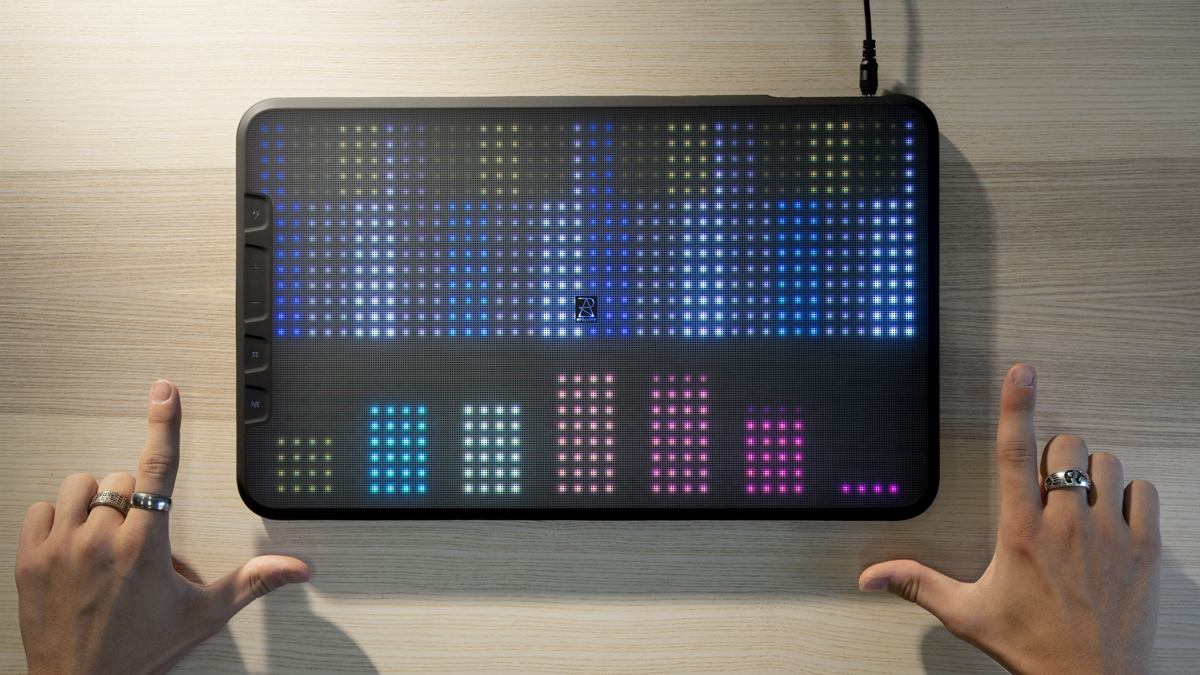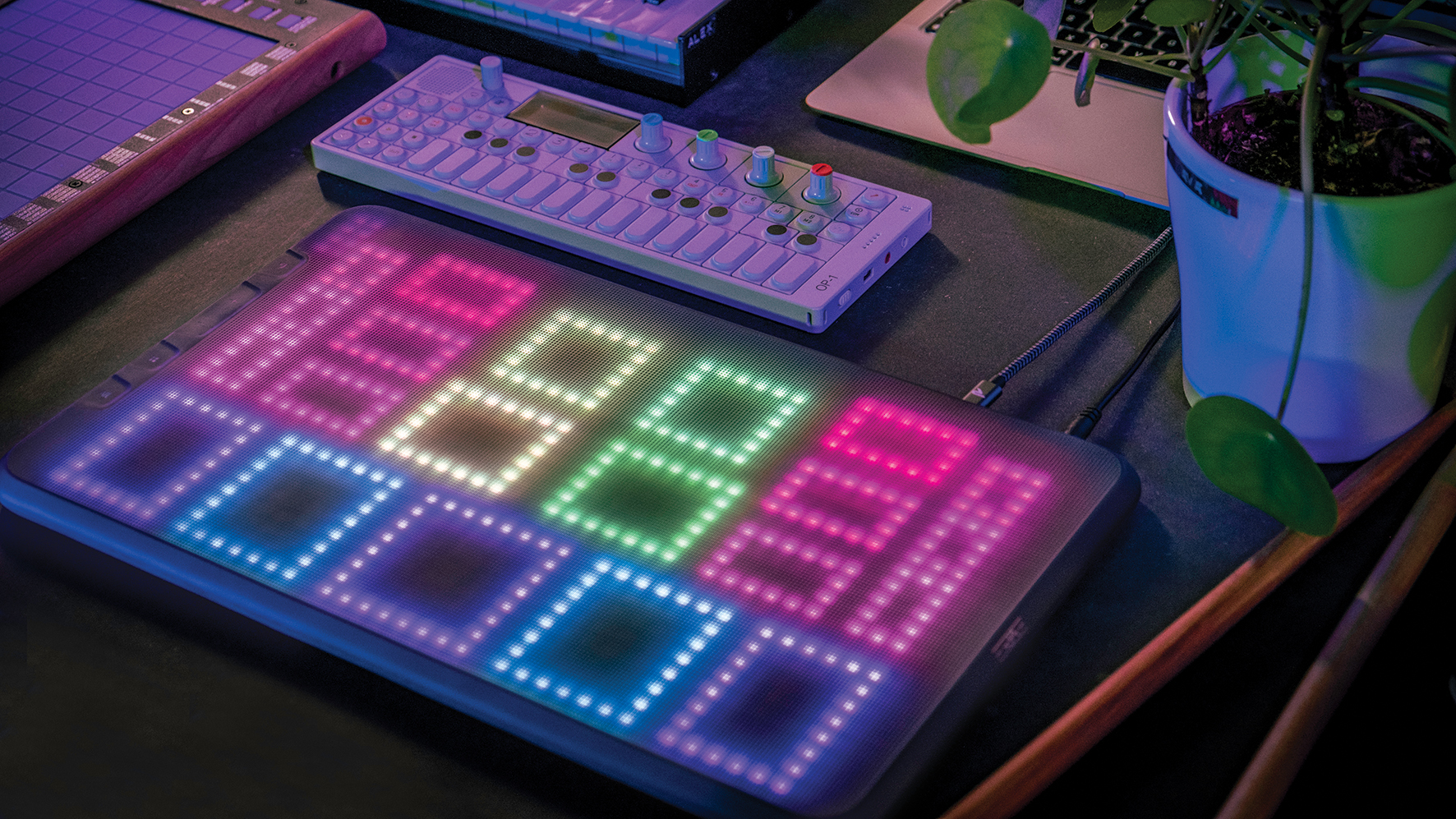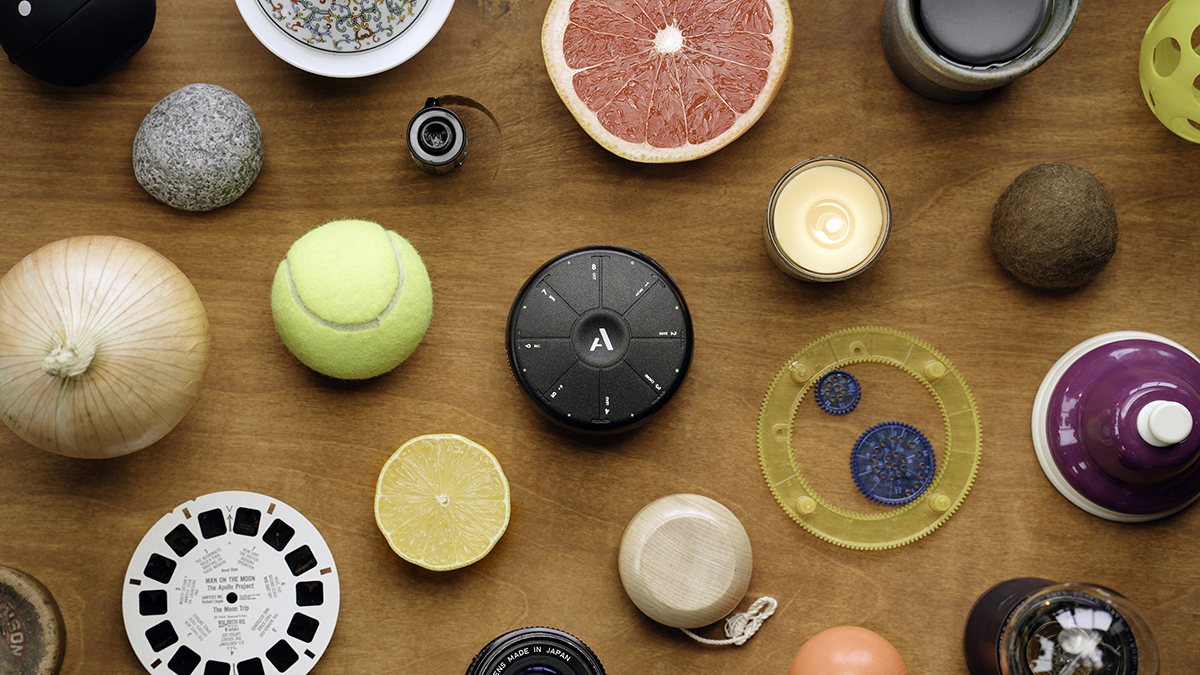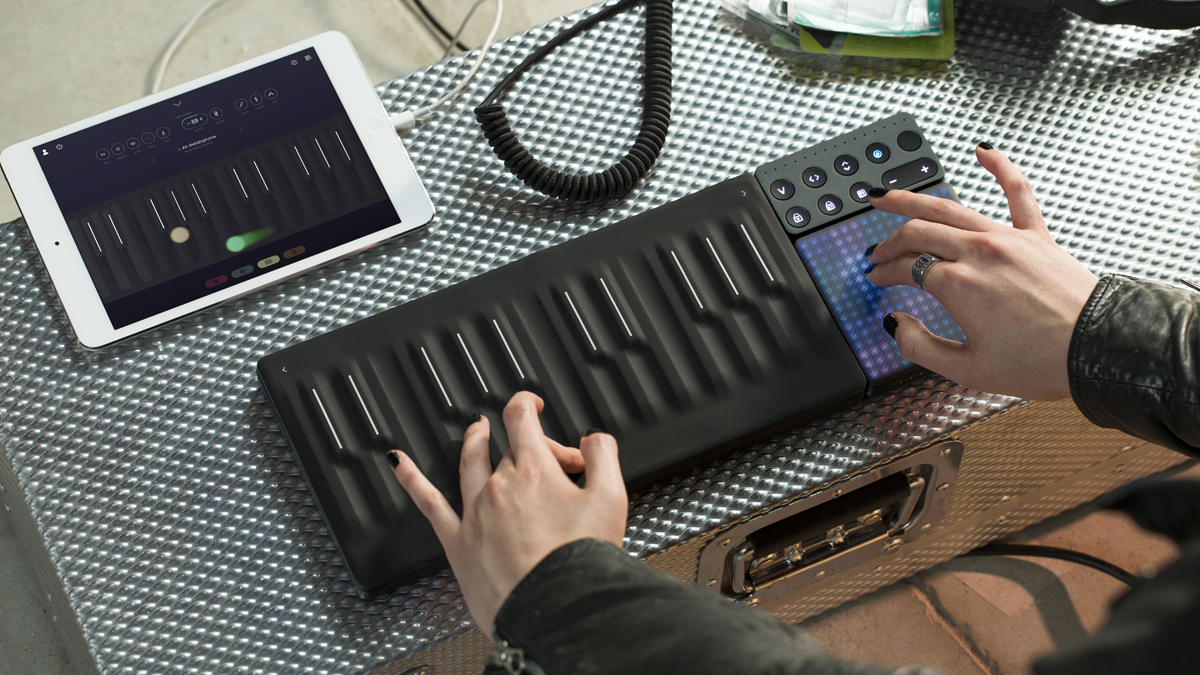Total control: how the latest MPE, touch and gesture controllers could revolutionize your music production
From squidgy keys to wearable rings, bounceable beat-makers and distance-sensing crystal balls, the array of unusual MIDI control options today is expanding exponentially
After our look at where we are – and where we’ve come from – in the world of software control, this time we’re looking ahead to where we might well be going, all starting with some of the innovators of music software…
The most extraordinary controllers all start with an initial idea. Whether it be re-thinking the entire approach to MIDI expression, harnessing multi-directionality or being led by an astounding new design philosophy. Launching anything that goes against the grain is a big risk.
Designers concoct their unique vision, developers and engineers then spend years assembling and perfecting the technology and finally, marketing and press relations teams have to convince us that this astounding new product is worth our cash. It’s tough, particularly with a marketplace unaccustomed to too much change.
When it comes to futuristic control options, this is perhaps doubly difficult. Yet, innovative companies, such as Embodme, have forged ahead with their visions, guided by the absolute belief that what they’re making will enhance the creative processes of musicians.

Edgar Hemery is Embodme’s CEO, and he spoke to us about the company’s colourful and adaptive Erae Touch. “The big goal with Erae Touch was to combine the most expressive features that you might find in high-end controllers like those from Haken and Roger Linn, so it sported continuous grids with aftertouch and MPE expression.
“The second aspect was that we wanted to keep it very configurable and versatile. So that you could display any representation of music you’d like so that it really fits any sort of use in the studio.
“From drum-pads, to mixers, to keyboards to isomorphic key-grids. We wanted to be able to pack everything you need in the studio while keeping the most expressive features in one product you can keep in a backpack. It’s also affordable, that’s a big aspect.”
Want all the hottest music and gear news, reviews, deals, features and more, direct to your inbox? Sign up here.
Hemery is keen to emphasise that his team didn’t want to just replicate existing ‘out there’ controllers, but rather take cues while enhancing the overall interactive experience.
We really worked hard to find the best technology available and push it
“We really worked hard to find the best technology available and push it. We’ve been developing a lot of electronics to get the best sensitivity threshold and dynamics. Available technology to get things as sensitive as we wanted wasn’t available, so we developed a lot of it in-house. It took a long time, we actually filed three patents on our technology, and we’re now really happy with the sensitivity and the dynamics that we obtained.”
When discussing the Erae Touch with Edgar Hemery, he revealed that the unique visual responsiveness of the controller had accidentally kickstarted a new artistic approach that the team hadn’t foreseen, but that it is now excited to pursue.
“[People] were more interested in the visual aspect even over the expressivity,” Edgar admits. “As time goes on we now see more of the potential. There is high demand for pixel art on the Erae Touch, and we’re orienting more towards this direction, so artists can use it as a low resolution screen where they can display lots of animations, videos and more while creating music.”

This two-way relationship – with the consumers turning the product into something quite different to what was originally envisaged, is exciting for Hemery, who is now pushing it as an art-form. “We have a way of editing your layout via our accompanying software Erae Lab, where you can drag and drop elements.
“We’ve expanded that beyond the traditional music-making layouts to incorporate pixel art, so you can get creative and play with animations. Triggering sounds and visuals at once is quite exciting. We’re thinking of how to set up several Erae Touches, so artists can create larger works.”
To Orba or not to Orba?
Though the Erae Touch is founded on the tried-and-tested control surface approach, the likes of Artiphon’s hand-held Orba, now in its second generation, detaches the music-making process entirely from the screen.
Adam McHeffey is Artiphon’s Director of Marketing, and he explained why a computer-free approach seemed appealing; “Some people might be getting tired of the screen, I think many are also getting tired of tangled cables and long signal chains and all of the other complexities that come with modern day music-making.”
Orba makes the professional feel more like a beginner and the beginner feel more like a pro
Adam tells us that Artiphon’s ethos is driven by the twin pulls of immediacy and fun, “Designing a product that doesn’t need any cables or a screen is really refreshing. Orba has its own battery, built-in sounds, and even its own speaker. There are also many people who are intimidated by the idea that music is made on a computer. For them, we offer a friendly-looking object at an affordable price.” McHeffey stresses however that, for the MIDI and DAW-angled, Orba is able to cleanly interface.

Adam explains to us the company’s ‘scaleable complexity’ ethos, “For a total beginner, a ten-year-old student could pick up Orba and start dabbling. Everything would be in tune, there wouldn’t be any wrong notes. Once they start layering, Orba 2’s quantise feature would kick in and make everything sound perfectly in time.
“Our gestures are designed to pick up natural human gestures, so they don’t require a lot of practice. Simply sliding your fingers across the playing surface will give you a slightly different performance each time. Unique as a fingerprint”
So, what would Adam say to those who might feel Orba might be a little too gimmicky? “I like the idea that Orba makes the professional feel more like a beginner and the beginner feel more like a pro. Everyone likes toys, and Orba can be a nice, easy break even for the touring musician. We see a lot of that: pros using our instruments to reconnect with a more playful side of themselves, or use it to bond with their kids.”
Rings of power
Similar to Artiphon’s Orba, Genki’s Wave Ring puts the expressivity in your fingers, yet is more tailored for the studio environment. “The strongest point to emphasise about the Wave Ring is that it gives people the ability to be in a studio, and it can act as a remote control for anything,” explains Olafur Bogason, Genki’s CEO.
“Everybody that dabbles in music knows the pain point of being in front of a piano but having to run to the computer to press record. Having a remote on your finger is very useful.”

Bogason tells us that the company took inspiration from Imogen Heap’s Mi.Mu gloves in their quest to enhance gesture control with their Ring. “For composers, or those that rely on string samples, it really helps to be able to use your hands intuitively to add nuance – heighten suspense or flow in some emotion.
“Most of the people that are writing strings for movies or TV shows or even just general pop music, they automate their strings using sliders. Sliders aren’t the best way to achieve these kinds of things. A lot of producers use the Ring for that.”
All at sea
“A unique challenge of designing MPE instruments is giving creators access to both expression and precision in equal measure,” Luminary ROLI’s Principal Sound Designer, Rafael Szaban, tells us. “With each Seaboard we’ve produced, we’ve taken steps to refine the interface in order to achieve this, but we’ve taken our most significant step forward by far with our latest, RISE 2.”
Rafael says that earlier iterations of the ROLI’s now-iconic Seaboard had great difficulty tracking finger-by-finger microphone adjustment, “[That was] really necessary to play a continuous pitch instrument like the Seaboard in tune across multiple voices. A muscle memory trigger is necessary to make the required micro-corrections in real time that enable mastery of an instrument.”
In designing a solution, ROLI looked at other instruments with extensive gestural control, “Particularly string instruments where continuous pitch playing creates depth of expression, but also presents challenges to playing in tune.”

Rafael continues: “What we hit upon was a newly re-engineered surface that features precision frets, small embossed lines of silicone down the centre of each key. Like a guitar’s fretboard, they serve as a motor-sensory guide while playing. We also broadened the surface of each keywave and articulated the shoulders to further improve finger register. They are subtle changes, but revelatory in practice, creating by far the easiest to play interface we’ve ever made.”
MPE is ready for a mass level of adoption and impact that can truly change the way that we make music
As the company that led that initial MPE charge, ROLI is confident that the Seaboard and similar controllers will continue to play a central role as technology develops. “When we first launched Seaboard, the number of synths and DAWs with MPE compatibility was extremely limited, and that put a ceiling on how usable it could be for most folks.
“Since then, it’s been incredible to see how quickly and dramatically things have changed, with an ever expanding list of MPE-compatible synths and major industry players like Ableton and Apple adopting MPE compatibility for their DAWs.
“The collective effect of this is that now, as never before, MPE is ready for a mass level of adoption and impact that can truly change the way that we make music.”


Computer Music magazine is the world’s best selling publication dedicated solely to making great music with your Mac or PC computer. Each issue it brings its lucky readers the best in cutting-edge tutorials, need-to-know, expert software reviews and even all the tools you actually need to make great music today, courtesy of our legendary CM Plugin Suite.
